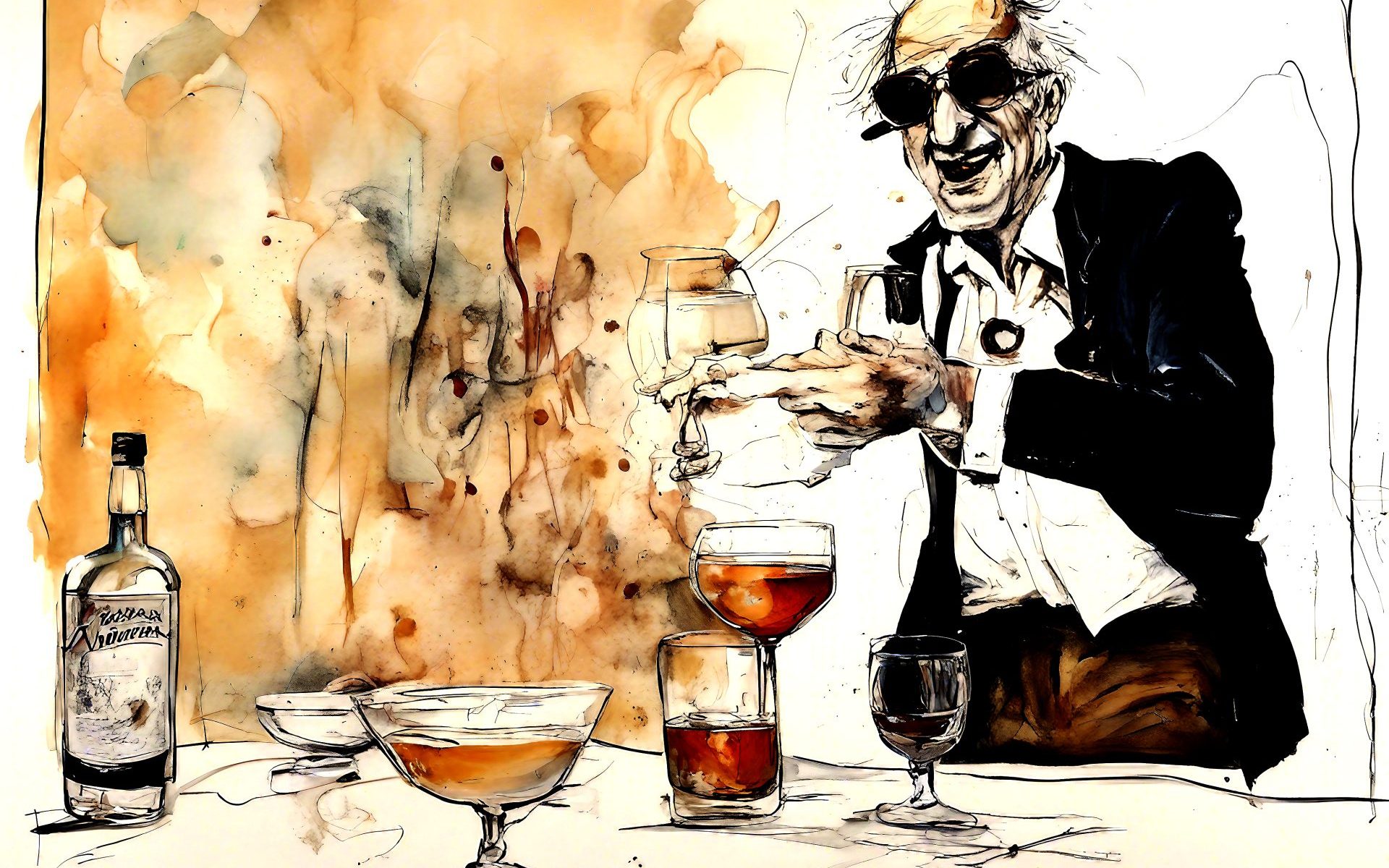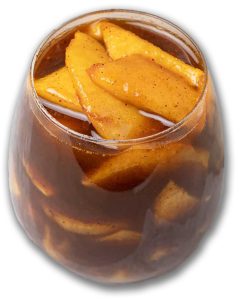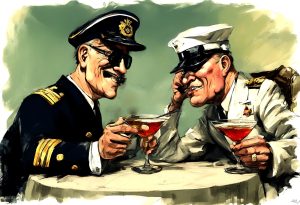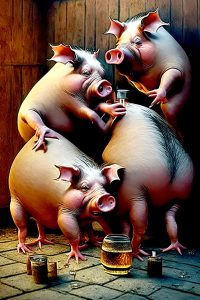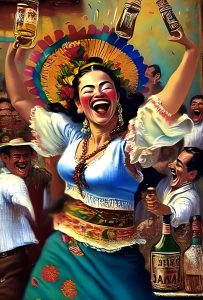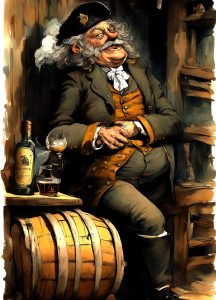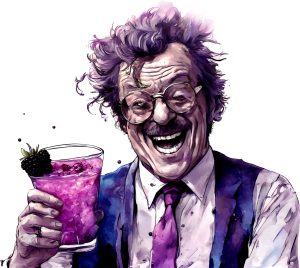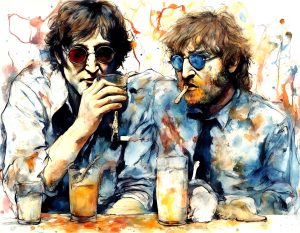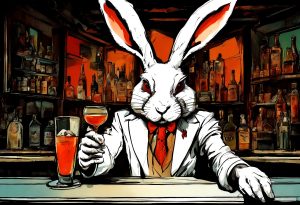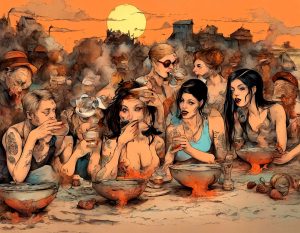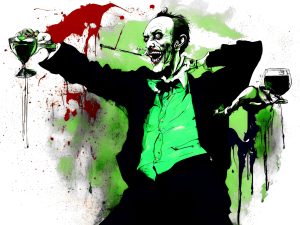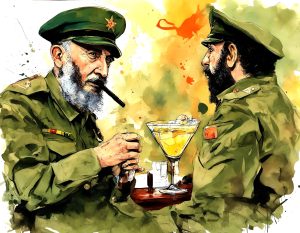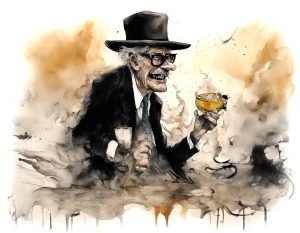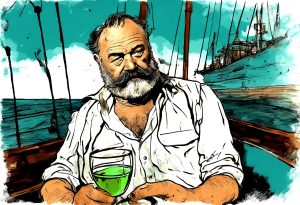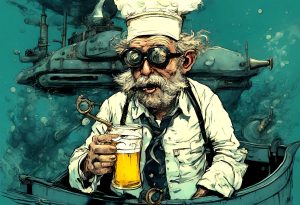Amaretto Sour was devised in the 1970s as a promotion for almond liquor Disaronno, known then as Amaretto di Saronno. Originally it was just two parts amaretto to one part lemon juice. Nowadays it usually includes egg white and bourbon, and all the better for it.
Apple Brumble
Created by George Mulholland, one chilly November afternoon at Bar Gros
Army and Navy
You might readily assume from its makeup that this is from the Tiki cocktail scene, but the Army and Navy, essentially a Gin Fizz but with Orgeat replacing the sugar syrup, likely came from the Army and Navy officers’ club in Washington after an inter-forces football match, or so legend has it.
Bacon Vodka
Everything tastes better with bacon it is said. Well vodka certainly does and here’s how.
Bloody Caesar
In the past it has been known as the Smirnoff Smiler, the Gravel Gertie and the Imperial Clam Digger but the national drink of Canada is now and forever undoubtedly named the Bloody Caesar.
Bloody Maria
Not so much all about Maria. Here it is all about tequila. Use a fresh unoaked tequila blanco to keep the taste clean but agave-forward, not fighting with the rest of the ingredients; there is quite a party going on inside already.
Bloody Mary
Somehow the Bloody Mary feels so right to start a relaxing Sunday morning session. It is the pretence of drinking a salad while giving you a good kick to the body and brain alike that lets it slide down without guilt. At the same time it’s guaranteed to shift the most ingrained of hangovers.
Blow My Skull
Thomas Davey was the 2nd Lieutenant Governor of Van Diemen’s Land, 1813-1819, as Tasmania was then known. By all accounts, mostly by his superiors, he was completely unqualified and thoroughly unfit for the role. As an officer in His Majesty’s Marine Forces he had taken part in the Battle of Trafalgar. It was likely, in his time in the Navy, that he acquired a passion for strong drink, mostly rum, and drink he did.
Bramble
Dick Bradsell’s second most famous creation, after the Espresso Martini, the Bramble was, he said, inspired by the wild blackberries he used to pick on the Isle of Wight as a child.
Brandy Alexander
Harry Nilsson introduced them to John Lennon on Lennon’s ‘lost weekend’. While being ejected from a gig Lennon allegedly assaulted a waitress. Lennon said they “tasted like milkshakes.”
Bullshot
Not the vegetarian option by any means, the Bullshot, once favoured by Hemingway at Harry’s Bar in Venice, is yet another variant on Bloody Mary but this time made with beef consommé,
Bunny Mary
I thought I’d seen every variation on a Bloody Mary then this innovative delight swung my way. From Rob Krueger, formally of Extra Fancy, NYC, it has ‘refreshing summer hit’ stamped all over it. What’s up, Doc?
Caipirinha
Brazil’s national cocktail, Caipirinha has its roots, naturally enough, in Portugal. In its original form, ‘Madeiran aguardente de cana’ with lemon, garlic, and honey, it was said to give relief from Spanish Flu, though after a few you may have felt the symptoms.
Catalan Rom Cremat
Originating on the Costa Brava, through the rum shipping trade with Cuba, it is what Catalan fishermen drunk in the morning to warm themselves up in the winter. That would do the trick.
Corpse Reviver #2
As may be assumed from its title, the chief purpose of a Corpse Reviver #2 is to rouse the drinker back from the dead. It can certainly work a treat, the morning after a lively wake.
Daiquiri
Daiquiri is the name of a beach and an iron mine near Santiago in Cuba. Supposedly it was created by an American mining engineer, Jennings Cox. However, more than a century before, Royal Navy sailors were given a daily grog ration of rum, water, lime juice, and sugar to combat scurvy.
Dark ‘n’ Stormy
Goslings from Bermuda, makers of Goslings Black Seal rum since 1857, trademarked Dark ‘n’ Stormy and technically this is the only rum you should use. Well bobbins to that. It is decent spiced rum and works well in the context but nobody wants their choice of spirit dictated to them. Drink what you wish and be damned. Let them sue.
Death in the Afternoon
In the original recipe he claimed that it was invented “by the author and three officers of H.M.S. Danae after having spent seven hours overboard trying to get Capt. Bra Saunders’ fishing boat off a bank where she had gone with us in a N.W. gale.” but then he was always one for a good yarn.
Depth Charge
There used to be, and maybe still is, a Spanish tapas bar, in a basement on Charlotte Street, which claimed to be one of the oldest in London. It stayed opened very late so we would nip down there after work, certainly after licensing hours, and get silly. One of its house specialities, which should give you a sense of the depravity of this establishment, was a Depth Charge, although perhaps it was just the depravity of our crew.
Dry Martini
Such a simple a drink, yet it is so ingrained in culture. Over the course of the 20th century, the Martini became increasingly dry. Starting in the 1920s at a ratio of 2:1, gin to vermouth, 6:1 is now the norm. The ‘Montgomery’, named after the Field Marshal’s penchant for attacking only when in possession of great numerical superiority, is 15:1.
